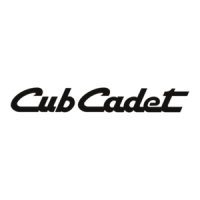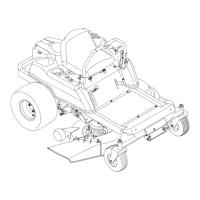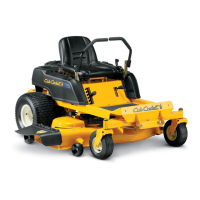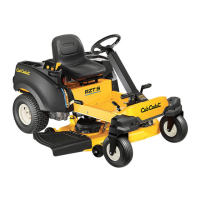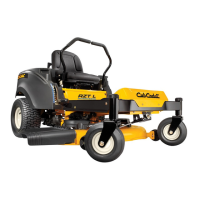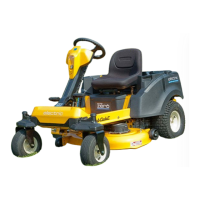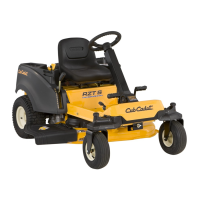Electrical System
85
Digital Multi-meter
A DMM is the most useful tool to troubleshoot any
electrical system. There is an amazing variety of DMMs on
the market. Some are very basic, others are tailored to
specific industries, and some high-end graphing meters
function like oscilloscopes. Even the most basic ones are
quite versatile. See Figure 7.32.
Uses
Voltage
Set meter to read “Volts DC ( _ _ _ )” if using an auto-
ranging meter or to an appropriate scale (typically 20 Volts
DC) if using a more basic model.
• Connect the meter in parallel to the circuit
being measured, between the test point and a
known-good ground. Turn on the circuit to be
tested, and read the meter.
NOTE: For most tests the engine need not be run-
ning, but the key will need to be turned ON.
• If the meter is connected with the polarity reversed, a “-” will appear in front of the voltage reading. It has
no ill effects on the meter nor on accuracy.
• If the meter is set to Volts AC (~) it may not register any DC voltage, but no physical harm will be done to
the meter nor the equipment being diagnosed. It may waste some time though.
Amperage
Most DMMs have a very limited capacity to test amperage (10 Amperes). When measuring current flow, the
meter must be connected in series with the component to be measured. That means opening the circuit and having
the circuit go through the meter.
NOTE: Some meters have an inductive “Amp clamp” accessory that can be used without breaking the circuit.
Resistance
Set the meter for the “Ω” scale.
• Isolate the part of the circuit to be tested (disconnect it from the source of power).
• Most auto-ranging meters will provide readings on several scales. For outdoor power equipment, the
straight Ohm scale is most appropriate. If a letter appears next to the W on the screen of the DMM, it indi-
cates different scales of sensitivity.
• “μ” is micro-Ohms, meaning is 1,000,000th (0.000001) of an Ohm
•“m” is milli-Ohms, meaning is 1,000th (0.001) of an Ohm.
•“K” is Kilo-Ohms, meaning 1,000 Ohms.
•“M” is Meg-Ohms, meaning 1,000,000 Ohms
• A reading of “0” may be called “Continuity”. A reading of “OL” may be referred to as “No Continuity”.
• Mistaken Ohm readings most frequently come from bad technique. Poor connections between the probes
and the point to be read can throw-off readings. False readings can be generated if the technician touches
both probes with their fingers while taking the reading.
• The meter has it’s own power source to measure resistance. Connecting the meter to a component that
has current going through it will damage the meter (usually beyond repair).
Figure 7.32
Testing amperage beyond the capacity of the meter can damage or burn out an internal fuse
in some meters. The fuses can be expensive.
! CAUTION! CAUTION
www.mymowerparts.com
For Discount Cub Cadet Parts Call 606-678-9623 or 606-561-4983
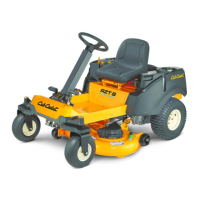
